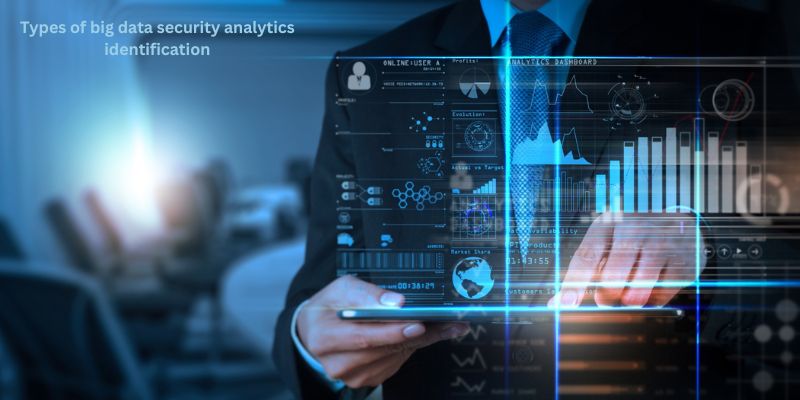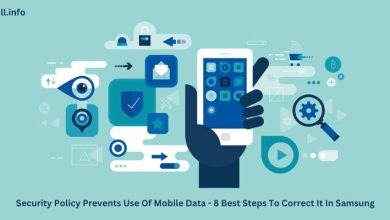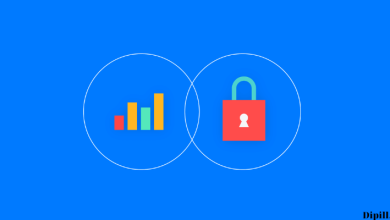4 Best Types Of Big Data Security Analytics
It is typical to hear a variety of new words being created every day as technology advances and evolves at a fairly swift rate. One of them is big data security analytics, a phrase frequently used to refer to problems with safeguarding and analyzing the data of important corporations and enterprises. In this article, with dipill.info, let’s find out some useful information about big data security analytics!
Contents
Why is big data security analytics important?

Despite the fact that security analyses have been around for a while, the introduction of Big data has significantly altered this industry. Security analysts can use Big data for advanced analytics, but they can also use machine learning. They can use big data to use ML techniques like anomaly detection to find small-scale, discrete network issues. Historically, network vulnerability assessment and correlation analysis have been the only approaches available to hackers and security analysts.
The development of intrusion detection systems based on anomalies and the detection of bank fraud may be seen as the forerunners of data-driven information security.
Analytics based on big data and cybersecurity approaches are used to ensure data security and reduce the chance of data breaches.
Types of big data security analytics identification

1. Predictive analysis
Statistics, simulation, mining of data, artificial intelligence, and neural networks may all be used to anticipate data trends. It is the most popular and approachable method for analytics. This model seeks to predict the results of several firm reaction scenarios to a certain situation.
Predictive analytics models come in a variety of shapes and sizes, but they always use a scoring mechanism to estimate the likelihood that a particular outcome will occur. The three foundational elements of predictive analytics are transaction profiling, decision-making analysis & optimizing, and predictive modeling. In order to identify risks and opportunities, predictive analytics searches transaction and historical data for trends.
2. Prescriptive analytics
One of the three main types of data analysis that businesses utilize is prescriptive analytics. Based on the facts at hand, the analyst may use prescriptive analytics to offer the best suggestions for a particular situation. Compared to descriptive and forecasting analytics, which are more focused on the past and future, prescriptive analytics lay a greater emphasis on the current situation.
3. Cyber analytics
In the BI and analytics sector, cyber analytics, which blends analytical proficiency with cybersecurity skills, is a new and quickly expanding skill set. With the rise of internet-connected gadgets, cyber attacks have become more numerous and sophisticated.
Cyber analysts employ sophisticated software and data-driven AI security technologies to identify flaws and close attack channels.
4. Diagnostic analytics
Diagnostic analytics accomplishes exactly what its name implies: it determines the root cause of an issue. It provides a thorough grasp of the root cause of an issue.
Analytics are used by big data engineers to determine what causes an event. Drill-down, data mining, recovering information, churn reason analysis, and consumer wellness score analysis are examples of diagnostic analytics approaches. Organizations utilizing diagnostic analytics benefit from analyzing the underlying causes of the most important churn indicators and seeing trends among their most devoted customers.
Big data security analytics use cases

Networking traffic analysis
Large enterprises typically experience a lot of traffic coming into and going out of their networks. As they try to keep up with this volume of traffic, network specialists frequently miss irregularities.
Big data security analytics, however, enables rapid reporting of anomalies and dire situations. Security experts can quickly monitor network traffic trends.
User behavior research
Customers’ interaction with the IT infrastructure is a continuous process. Traditional network monitoring methods, on the other hand, make it difficult for security analysts to maintain a close eye on every user’s activity, mostly because it takes a lot of time when the customer base is large.
Big data security analytics solutions, however, make this possible and help security analysts do customer-level research while using a minimal amount of resources. This removes internal risks in addition to making user profile creation easier.
Threat assessment
Risk scanning has been a standard practice in the cybersecurity industry for decades. It was being used before Big data even existed. Security analytics has greatly increased since the advent of Big data, which improved threat detection.
Cloud security vigilance
Nowadays, one of the most talked-about subjects in the IT sector is cloud computing, and businesses are embracing cloud infrastructure in significant numbers. Additionally, big data security analytics is a great automated cloud monitoring technique.
3 Best big data security analytics for your reference’s need
LogRhythm
Leading SIEM solution LogRhythm offers thorough security analytics. Analytics for User and Entity Behavior (UEBA), Security Orchestration, Networking Detection and Response, and other services are some of its most well-liked offerings.
Over the years, it has worked with several notable customers, such as the space agency NASA, Cargill, Gartner and etc.
Security analytics from RSA
With the aid of a variety of pre-built reports from the well-known security analytics system RSA security, security analysts may start using network analytics right away. It utilizes the network’s data collection in unique ways. RSA Live is also made available to help with data processing and matching rules.
IBM QRadar
Not to mention, IBM’s QRadar is a thorough cybersecurity solution with Big data integration and cybersecurity analytics. Even while the infrastructure is rather extensive and offers a wide range of services, if it is insufficient, your setup becomes difficult.
In order to ensure security, the sector uses a variety of Big data security analytics suppliers. While some focus on specific use cases, others are generally appropriate in all situations. Here, we’ll discuss the best Big data technologies to take into account.
Conclusion
I hope you found this article about big data security analytics useful. If you are interested in similar topics, you can also refer to the article Security Policy Prevents Use Of Mobile Data – 8 Best Steps To Correct It In Samsung. Have a good day!
Conclusion: So above is the 4 Best Types Of Big Data Security Analytics article. Hopefully with this article you can help you in life, always follow and read our good articles on the website: Dipill.info




